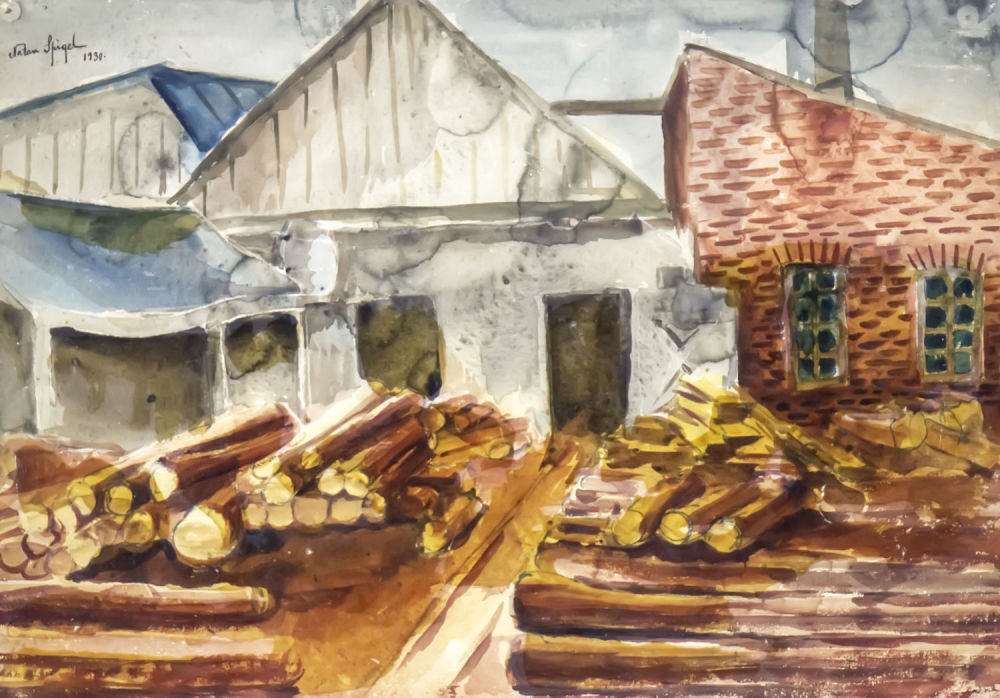For further details and images we invite all our customers to contact us on our Whatsapp - +972-544-315171
Domestic shipping: 60NIS.
International shipping and handling will be calculated upon request.
משלוח בדואר שליחים - 60ש"ח.
משלוח בדואר רשום - 25ש"ח.
|
LOT 85:
Natan Spigel (Polish, 1892-1942) - Lumbar Yard, Watercolor on Paper, 1930.
|
|


|
Sold for: $2,000 (₪7,200)
₪7,200
Start price:
$
500
Estimated price :
$1,200 - $2,500
Buyer's Premium: 20%
VAT: 18%
On commission only
Users from foreign countries may be exempted from tax payments, according to the relevant tax regulations
|
Natan Spigel (Polish, 1892-1942) - Lumbar Yard, Watercolor on Paper, 1930.
Signed and dated.
33x46.5cm.
Natan Spigel (also: Szpigiel/Spiegel/Szpigel) (1892-1942) was a Jewish painter born in Poland.
He was born into an Orthodox Jewish family in Lodz, now in Poland, in 1892.
The remnants of his family are now based in London.
He studied art as a young man and then in 1910 traveled to Rome on sponsorship, where he continued his studies with Henryk Glicenstein.
His first major success, in Paris, was the invitation to show in the 1924 Salon d'Automne, although his first public exhibition was in Lodz in 1921. He was invited to exhibit in London at the Ben Uri Gallery in 1930 and also, at a joint exhibition with Jacob Epstein.
In Poland Natan Spigel was regularly exhibiting his work, with shows in Lodz, Krakow and Warsaw.
Spigel considered himself a Jewish painter, and his painting reflected this focus, depicting scenes of Jewish life in Poland, as well as portraits and still-life, in both watercolors and oils.
A particularly distinctive feature of some of his watercolors was his use of varnish to give age and contrast.
Spigel was a key member of the Expressionist group Jung Idysz.
He was also a member of ‘Start’, a group of mainly Jewish, Lodz artists, who exhibited across Poland throughout the 1920s and 30s.
By the 1930s, his work was in collections in Poland, London, and Israel.
Shortly after the German invasion of Poland, in 1939, Natan Spigel, together with his family, was interned in the Radomsko ghetto.
He continued to paint during this time.
He perished in the Treblinka extermination camp in 1942.
Today Natan Spigel’s work can be seen in public collections in Tel Aviv, London, Lublin, and Ein Harod.
Only about 20 of his paintings are definitely known to have survived.


